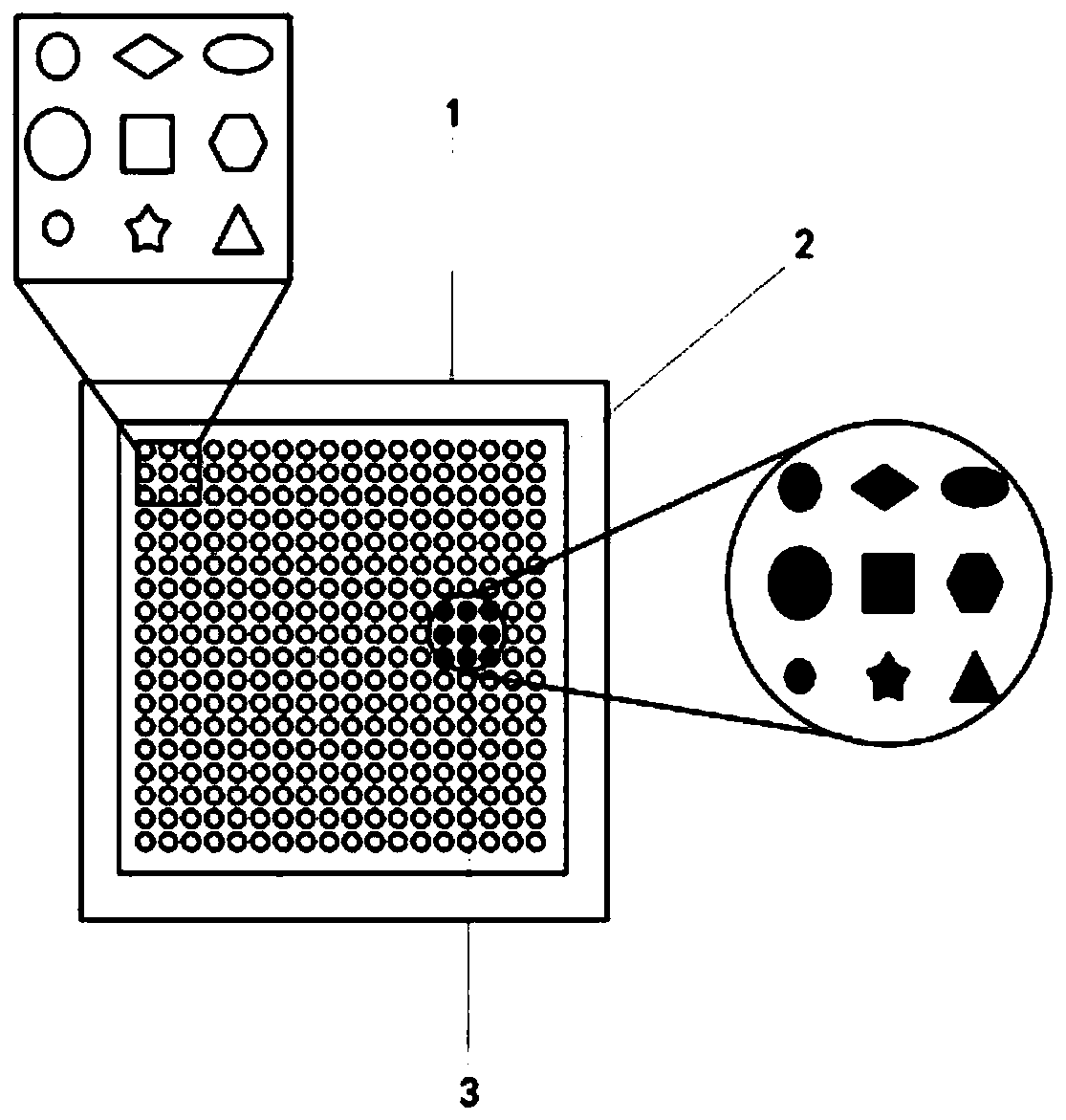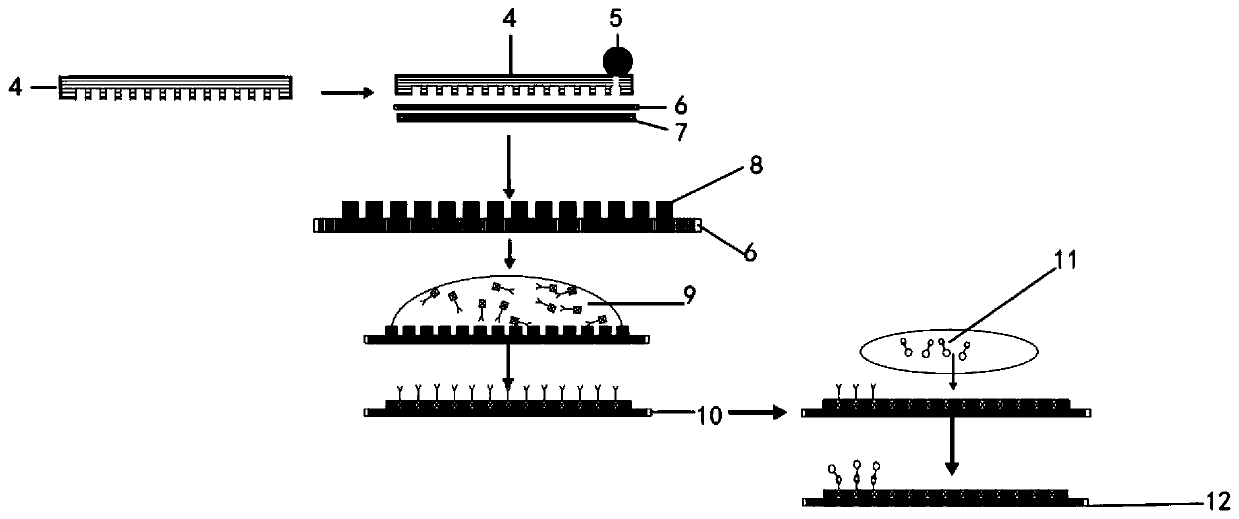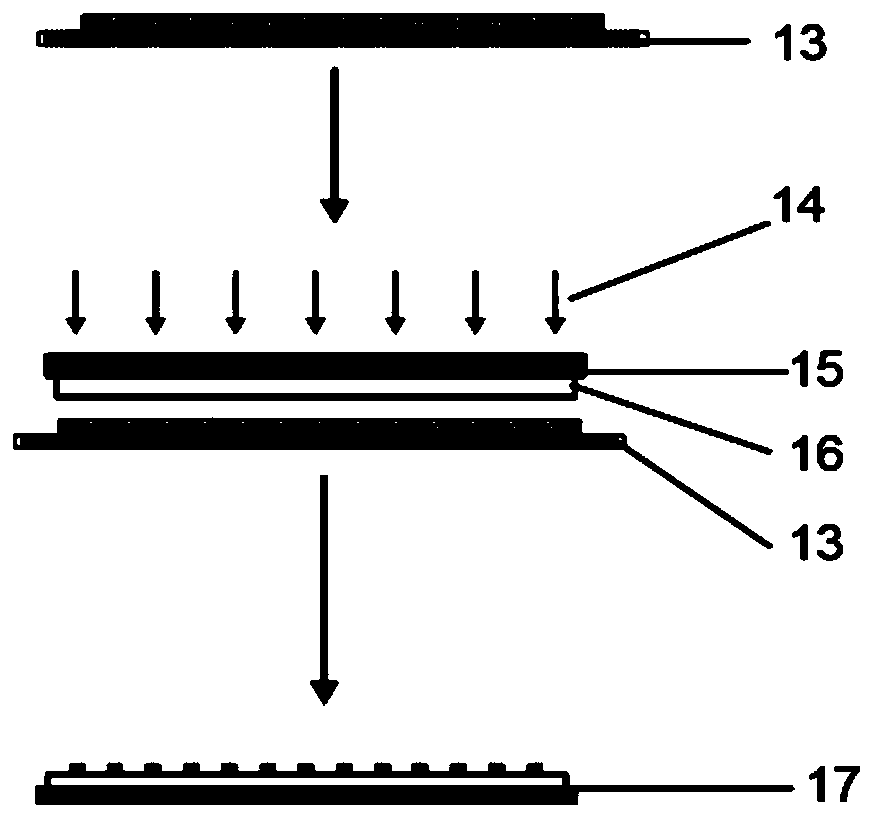High-flux microarray detection chip, and preparation method and utilization method of high-flux
A microarray chip and high-throughput technology, which is applied in the field of biomedical detection, can solve the problems of increasing and affecting the detection accuracy, and achieve more sensitive detection, fast detection, and increased detection accuracy.
- Summary
- Abstract
- Description
- Claims
- Application Information
AI Technical Summary
Problems solved by technology
Method used
Image
Examples
Embodiment 1
[0048] Such as figure 1 As shown, the present invention provides a high-throughput microarray chip, which sequentially includes a porous film base layer 1 and an organic polymer array layer 2 from bottom to top. Micropores are arranged in the organic polymer array layer, and micropores are accommodated in the micropores. The detection microparticle 3 adapted to the shape of the microwell, the detection microparticle is coated with an antibody.
[0049] A microarray chip is a single area of a chip, and multiple single areas can be integrated into an ultra-high-throughput detection chip. The size of a single area of a microarray chip can be (5-100)mm*(5-100)mm, and its size can be adjusted appropriately according to the throughput of the microarray. Chip size fits.
[0050] The micropores arranged in the organic polymer array layer can be set as one or more of circles, stars, triangles, rounded rectangles, ovals, rectangles, and polygons, and the sizes of the micropores ca...
Embodiment 2
[0057] figure 2 A flow chart of a method for preparing a high-throughput microarray detection chip is provided, such as figure 2 shown, including the following steps:
[0058] Step 1: Place the porous film base 6 on the air-permeable thermoplastic 7, place a carrier under the air-permeable thermoplastic, and place the PDMS mold 4 with protrusions on the bottom surface according to the micropore array pattern on the porous film base;
[0059] Step 2: Open the sample injection hole on the PDMS mold, the position of the punched hole is outside the microhole array, and perform plasma cleaning on the PDMS mold after the hole is punched. Drop the liquid 5 to be cured (such as NOA81 photoresist) used to prepare the organic polymer array layer at the injection hole position, cover the injection hole, and keep the vacuum. At this time, the air in the PDMS mold will escape from the injection hole. The escaping air forms bubbles in the liquid to be solidified near the injection hole,...
Embodiment 3
[0067] image 3 A high-throughput microarray chip of the present invention is provided to detect the method for transfer and recovery of microparticles, such as image 3 shown, including the following steps:
[0068] Step 1: Pour the organic prepolymer solution 16 to be photocured on the microarray chip 13 equipped with detection microparticles, so that it spreads freely to cover the surface of the chip, and put a layer of the same composition as the organic prepolymer solution on it. cured substrate 15;
[0069] Step 2: Curing the target area by irradiating ultraviolet light 14, forming a covalent bond between the detection microparticles assembled on the microarray chip and the cured organic prepolymer 16, separating the microarray chip and transferring the detection microparticles, and retaining The relative position of the microparticles on the microarray chip.
[0070] By transferring and recovering the detection microparticles assembled on the microarray detection chi...
PUM
| Property | Measurement | Unit |
|---|---|---|
| pore size | aaaaa | aaaaa |
| diameter | aaaaa | aaaaa |
| volume ratio | aaaaa | aaaaa |
Abstract
Description
Claims
Application Information
 Login to View More
Login to View More - R&D
- Intellectual Property
- Life Sciences
- Materials
- Tech Scout
- Unparalleled Data Quality
- Higher Quality Content
- 60% Fewer Hallucinations
Browse by: Latest US Patents, China's latest patents, Technical Efficacy Thesaurus, Application Domain, Technology Topic, Popular Technical Reports.
© 2025 PatSnap. All rights reserved.Legal|Privacy policy|Modern Slavery Act Transparency Statement|Sitemap|About US| Contact US: help@patsnap.com



